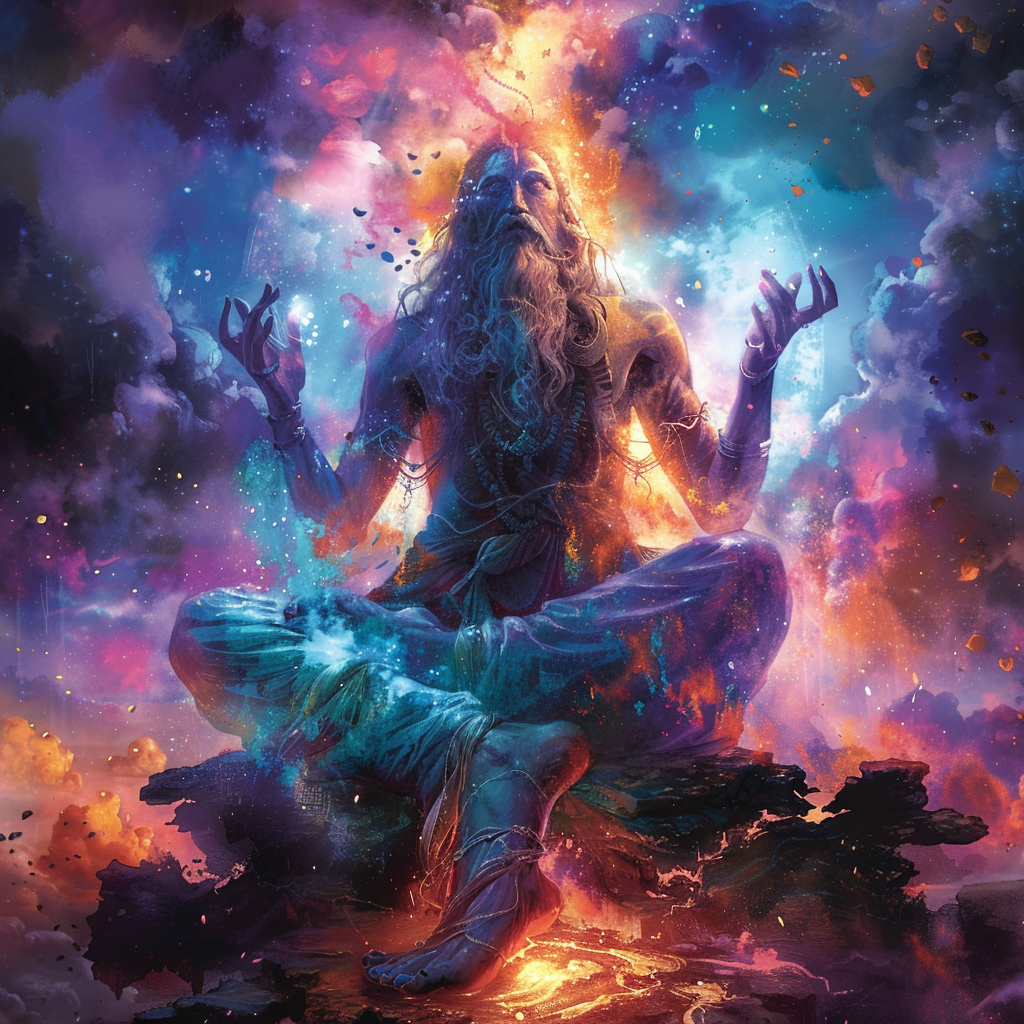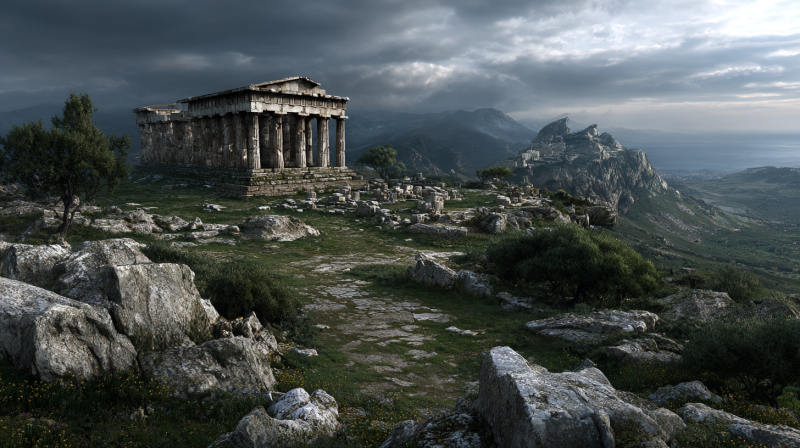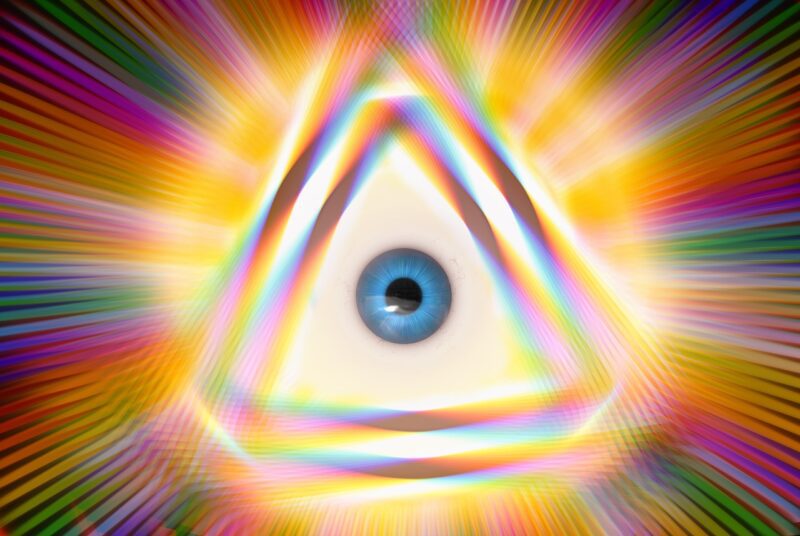Throughout human history, the concept of an apocalypse—an ultimate end of the world—has captured the imagination of countless cultures. These apocalyptic myths and prophecies offer a fascinating glimpse into the fears, hopes, and moral frameworks of ancient civilizations. In this blog post, we will explore various apocalyptic myths and prophecies from different cultures, providing an in-depth look at how the end of times was envisioned across the ancient world.
The Allure of Apocalyptic Myths
Before diving into specific myths and prophecies, it’s important to understand why apocalyptic themes have been so pervasive across different cultures. At its core, the concept of an apocalypse often serves several psychological and social functions:
- Moral Lessons: Apocalyptic stories often come with a moral or ethical lesson, emphasizing the consequences of human actions and the importance of virtues like justice, compassion, and faithfulness.
- Coping Mechanism: In times of crisis or uncertainty, apocalyptic narratives provide a sense of control or understanding, offering explanations for chaos and suffering.
- Cultural Identity: These myths often reinforce cultural values and identity, distinguishing one group from another through unique end-of-the-world scenarios.
Now, let’s journey through some of the most compelling apocalyptic myths and prophecies from ancient cultures.
Norse Mythology: Ragnarok
In Norse mythology, the end of times is depicted as Ragnarok, which translates to “Fate of the Gods” or “Twilight of the Gods.” Unlike many other apocalyptic myths, Ragnarok is not just a cataclysm for humanity but also for the gods themselves.

The Prophecy
Ragnarok begins with a series of ominous signs: a long, harsh winter (Fimbulwinter), the breakdown of social order, and the awakening of mythical creatures. The prophecy foretells that:
- The world will be plunged into a brutal winter lasting three years.
- Humanity will descend into chaos, with family members turning against each other.
- The monstrous wolf Fenrir will break free from his chains, and the serpent Jormungandr will rise from the sea, causing floods and earthquakes.
- The fire giants, under Surtr’s leadership, will march from Muspelheim to engulf the entire world in flames as the sky splits open.
The Final Battle
The gods, aware of their impending doom, prepare for the final battle. Odin, the chief of the gods, confronts Fenrir but is devoured. Thor battles Jormungandr, managing to kill the serpent but succumbing to its venom shortly after. Loki, the trickster god, fights Heimdall, and they kill each other.
Rebirth
Despite the destruction, Ragnarok also signifies renewal. The world is reborn from the ashes, with two human survivors, Lif and Lifthrasir, who repopulate the earth. A few gods, such as Balder, return from the dead, and a new era begins.
Mayan Prophecy: The Long Count Calendar
One of the most famous apocalyptic prophecies in modern times is derived from the Mayan Long Count calendar, which was believed to predict the end of the world on December 21, 2012. While this date sparked global fascination and fear, it was rooted in a deep and complex understanding of time and cycles by the ancient Maya.

The Calendar
The Mayan Long Count calendar is a system that tracks longer periods of time by counting days in a linear sequence. It consists of multiple cycles, with the most significant being the baktun, a period of 144,000 days. The end of the 13th baktun was the point that aligned with the date December 21, 2012.
Interpretation
Contrary to popular belief, the Mayan prophecies did not predict an apocalyptic end but rather the end of an era and the beginning of a new one. Scholars suggest that the date marked a transition, a time for reflection, renewal, and transformation.
Cultural Significance
For the Maya, cycles of creation and destruction were integral to their worldview. Their myths speak of previous worlds that were created and destroyed, each serving as a lesson for the succeeding world. The end of a baktun was an opportunity to reflect on the past and prepare for future growth.
Hinduism: The Kali Yuga
In Hinduism, time is divided into four yugas (ages), each representing a phase in the cosmic cycle: Satya Yuga (the age of truth), Treta Yuga, Dvapara Yuga, and Kali Yuga (the age of darkness). According to Hindu beliefs, we are currently in the Kali Yuga, which is characterized by moral decline, corruption, and materialism.

The Prophecy
According to various Hindu texts like the Vishnu Purana and the Bhagavata Purana, the Kali Yuga is characterized by:
- The deterioration of virtues and righteousness.
- The rise of greed, dishonesty, and violence.
- The weakening of dharma (moral law).
- A decrease in the lifespan and physical stature of humans.
The End and Renewal
The arrival of Kalki, the final Vishnu avatar, who will purge the world of sin and restore dharma, will signal the end of the Kali Yuga. After this period of turmoil, a new Satya Yuga will begin, and the cycle of ages will continue.
Symbolism
The concept of yugas serves as a reminder of the cyclical nature of time and the perpetual battle between good and evil. It encourages adherents to strive for spiritual growth and righteousness even in times of moral decay.
Zoroastrianism: Frashokereti
Zoroastrianism, one of the world’s oldest monotheistic religions, envisions the end of times as Frashokereti, a final renovation of the universe where good triumphs over evil.

The Prophecy
According to Zoroastrian texts, including the Avesta and the Pahlavi scriptures, the end of times will involve:
- A great battle between the forces of good, led by Ahura Mazda, and the forces of evil, led by Angra Mainyu.
- The coming of Saoshyant, a savior figure who will lead humanity in the final battle.
- The resurrection of the dead and the final judgment of all souls.
The Outcome
In the aftermath of the final battle, evil will be vanquished, and the world will be purified. The righteous will be granted eternal life in a perfected world, free from suffering and death.
Symbolism
Frashokereti symbolizes the ultimate victory of good over evil and serves as a source of hope and moral guidance for Zoroastrians. It emphasizes the importance of living a righteous life and contributing to the cosmic struggle against evil.
Ancient Egyptian Beliefs: The Destruction of Humanity
In ancient Egyptian mythology, the concept of an apocalypse is illustrated in the story of the “Destruction of Humanity,” where the sun god Ra decides to punish humankind for their disobedience and rebellion.

The Story
According to the myth, Ra, angered by the disrespect and disobedience of humans, sends his daughter, the lioness goddess Sekhmet, to punish them. Sekhmet goes on a rampage, slaughtering humans until the land is soaked with blood.
Divine Intervention
To prevent the total annihilation of humanity, Ra devises a plan. He orders his priests to brew a vast quantity of beer mixed with red ochre to resemble blood. Sekhmet, mistaking the beer for blood, drinks it and becomes intoxicated, falling into a deep sleep. Thus, humanity is spared from complete destruction.
Symbolism
This myth highlights the themes of divine retribution, the destructive potential of divine power, and the importance of balance and mercy. It serves as a reminder of the consequences of defying the gods and the potential for redemption through divine intervention.
Judeo-Christian Tradition: The Book of Revelation
The Book of Revelation, also known as the Apocalypse of John, is the final book of the New Testament and presents a vivid and symbolic depiction of the end of times.

The Vision
The text describes a series of visions experienced by John of Patmos, including:
- The appearance of the Four Horsemen of the Apocalypse, representing conquest, war, famine, and death.
- The breaking of the seven seals, each unleashing a different catastrophe.
- The rise of the Antichrist and the battle of Armageddon.
- The final judgment, where the dead are resurrected, and the righteous are granted eternal life in a new heaven and new earth.
Symbolism and Interpretation
Revelation is rich in symbolism and has been interpreted in various ways throughout history. It has inspired countless theological discussions, artistic representations, and apocalyptic movements.
Moral and Ethical Lessons
The Book of Revelation emphasizes the ultimate triumph of good over evil, the importance of faithfulness and perseverance, and the promise of divine justice and renewal. It serves as both a warning and a source of hope for believers.
The Aztec Prophecy: The Fifth Sun
The Aztec civilization believed in a cyclical view of time, with each era, or “sun,” ending in a cataclysm before a new one began. According to Aztec mythology, we are currently living in the era of the Fifth Sun.

The Prophecy
The Aztecs believed that the previous four suns had ended in destruction:
- The First Sun was destroyed by jaguars.
- The Second Sun ended in a windstorm.
- The Third Sun was destroyed by a rain of fire.
- The Fourth Sun ended in a great flood.
The Fifth Sun
The current era, the Fifth Sun, is prophesied to end in earthquakes and famine. This belief was deeply embedded in Aztec culture and influenced their rituals, including human sacrifices, to appease the gods and delay the inevitable end.
Symbolism
The cyclical nature of Aztec cosmology underscores the themes of impermanence, renewal, and the constant need to maintain harmony with the divine forces. It reflects the belief in a delicate balance between creation and destruction.
The Eternal Fascination with the End
The apocalyptic myths and prophecies of ancient cultures offer a profound insight into how different societies understood their world and their place within it. These narratives, though diverse in their details, share common themes of morality, renewal, and the eternal struggle between order and chaos.
As we reflect on these ancient stories, we can see how they continue to influence modern culture, from literature and film to religious beliefs and philosophical inquiries. The fascination with the end of times remains a powerful force in human imagination, serving as a mirror to our deepest fears and hopes.
By studying these myths and prophecies, we gain not only a better understanding of ancient cultures but also a greater appreciation for the timeless and universal aspects of the human experience. In the end, these stories remind us of the importance of living with integrity, compassion, and an awareness of the larger cosmic cycles that shape our existence.
References
- Lindow, J. (2002). Norse Mythology: A Guide to the Gods, Heroes, Rituals, and Beliefs. Oxford University Press.
- Simek, R. (1993). Dictionary of Northern Mythology. D.S. Brewer.
- Aveni, A. (2009). The End of Time: The Maya Mystery of 2012. University Press of Colorado.
- Stuart, D. (2011). The Order of Days: The Maya World and the Truth About 2012. Random House.
- Klostermaier, K. K. (2007). A Survey of Hinduism. State University of New York Press.
- Brown, C. M. (1990). The Triumph of the Goddess: The Canonical Models and Theological Visions of the Devi-Bhagavata Purana. State University of New York Press.
- Boyce, M. (2001). Zoroastrians: Their Religious Beliefs and Practices. Routledge.
- Dhalla, M. N. (1938). History of Zoroastrianism. Oxford University Press.
- Wilkinson, R. H. (2003). The Complete Gods and Goddesses of Ancient Egypt. Thames & Hudson.
- Pinch, G. (2004). Egyptian Mythology: A Guide to the Gods, Goddesses, and Traditions of Ancient Egypt. Oxford University Press.
- Pagels, E. (2012). Revelations: Visions, Prophecy, and Politics in the Book of Revelation. Viking.
- Ehrman, B. D. (2004). The New Testament: A Historical Introduction to the Early Christian Writings. Oxford University Press.
- Townsend, R. F. (2009). The Aztecs. Thames & Hudson.
- Carrasco, D. (1999). City of Sacrifice: The Aztec Empire and the Role of Violence in Civilization. Beacon Press.





